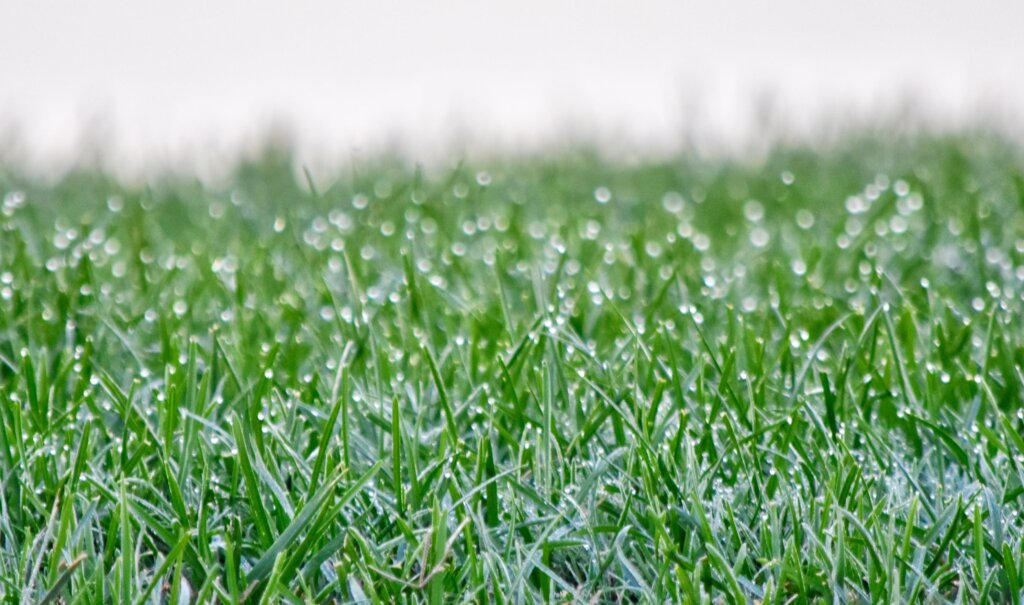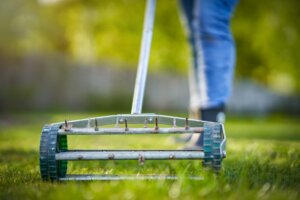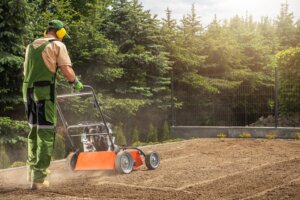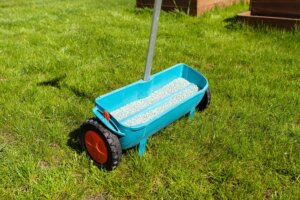Wondering if you should water your lawn after fertilizing? The answer is almost always yes, but how and when you do it makes all the difference.
Key Takeaways:
- Always water after fertilizing when using granular products to activate nutrients.
- For liquid fertilizer treatments, wait 2–4 hours before watering your lawn.
- In Pennsylvania, early morning watering helps your lawn stay healthy and reduces evaporation.
- Avoid watering before heavy rain to prevent washing away fertilizer.
- A professional lawn care company can help fine-tune your watering schedule and fertilization routine for the best results.
Why Watering After Fertilizing Matters for a Healthy Lawn
Watering helps move fertilizer nutrients into the root zone, where grass can absorb them efficiently. Skip this step, and you risk fertilizer burn, nutrient loss, or wasted product.
In Pennsylvania’s variable climate, proper watering ensures your lawn stays green and resilient through every season, from the wet spring to the dry summer months. Homeowners across the Tri-State area can benefit from consistent watering practices that balance moisture and promote stronger, healthier turf year-round.
Granular Fertilizer vs. Liquid Fertilizer Treatments
Different fertilizer types call for different watering techniques. Use the table below to guide how and when to water your lawn after each type of fertilizer application.
| Granular Fertilizer | Liquid Fertilizer Treatment |
|---|---|
| Contains fertilizer granules that rest on the lawn surface. | Applied as a liquid spray that coats grass blades. |
| Water immediately after applying to activate nutrients and prevent burning. | Wait 2–4 hours before watering to let nutrients absorb into the grass. |
| Use about ¼ inch of water to dissolve granules evenly across the entire lawn. | Water too soon, and you risk washing away nutrients before they reach the root zone. |
For more expert guidance on proper timing and technique, visit our article on Fertilizer Application. Whether you use granular fertilizers or liquid fertilizers, the right watering routine helps nutrients penetrate the soil, keeping your lawn healthy and vibrant all season long.
How Much Water Should You Use After Fertilizing?

A general rule is to apply enough water to soak the top 4–6 inches of soil where most roots grow. For Pennsylvania lawns, that’s roughly 0.25 to 0.5 inches of water, depending on weather conditions and soil type:
- Heavy clay soils: Require less frequent watering, but ensure the soil is well-aerated.
- Sandy soils: Need more frequent watering since they drain faster.
- Use a rain gauge: To track rainfall and prevent overwatering or wasting product.
The University of Wisconsin Extension notes that moderate, consistent watering moves nutrients into the root zone without runoff, and that fertilizing only as needed, guided by a soil test, prevents over-fertilization and ensures your lawn gets the right nutrients.
For optimal results, water your lawn in the early morning when it’s cooler and sunlight is gentler. This prevents evaporation and reduces the risk of fungal diseases.
Seasonal Lawn Watering Schedule in Pennsylvania

Your lawn’s watering needs vary with the seasons. Here’s what local homeowners should follow:
| Season | Watering Frequency | Tips |
|---|---|---|
| Early Spring | 1–2 times per week | Start slow, as grass breaks dormancy. |
| Summer | 3–4 times per week | Deep, infrequent watering helps prevent drought stress. |
| Early Fall | 1–2 times per week | Ideal time for lawn fertilizing and root development. |
| Late Spring | Adjust as needed | Watch for rainfall and soil moisture levels. |
Following this seasonal watering schedule helps balance soil moisture, reduce stress on your grass, and maintain consistent nutrient absorption year-round. For more timing tips, check out our detailed guide on When Should You Water Your Lawn After Applying Fertilizer?.
What Happens If It Rains Right After I Fertilize My Lawn?
If light rain occurs shortly after fertilizing, it can actually help soak and distribute nutrients into the root zone. But heavy rain can wash fertilizer off your yard, potentially harming local waterways and wasting your product.
Pro Tip: Always check the weather forecast before applying fertilizer. If a downpour is expected within 24 hours, reschedule your fertilization to prevent runoff.
Should You Fertilize Wet or Dry Grass?

It’s best to apply fertilizer to dry grass and then water your lawn afterward. Wet blades can cause fertilizer granules to stick, leading to burn spots. Always ensure the lawn is dry before spreading fertilizer, and use a sprinkler system to water it evenly after application.
For step-by-step techniques, visit How to Apply Lawn Fertilizer for expert guidance.
Can You Fertilize Grass Without Watering?
Technically, yes, but you shouldn’t. Without proper watering, nutrients stay on the surface and can damage grass blades or wash away with the next rain. Watering is what activates slow-release fertilizers and ensures your lawn fertilizer feeds the roots effectively.
If you’re using slow-release fertilizers, aim for consistent soil moisture rather than frequent watering. A smart irrigation system or sprinkler system can help automate this process for season-long results. For a complete step-by-step on timing and technique, visit our guide on How to Fertilize Lawn.
Post-Fertilization Lawn Care Tips
Once you’ve applied and watered your fertilizer, follow these tips to maintain a healthy lawn:
- Wait a few days before mowing to let nutrients settle.
- Avoid heavy foot traffic immediately after fertilizing.
- Use a rain gauge to maintain a consistent watering routine.
- Schedule aeration and weed control in early fall for better nutrient absorption.
For more expert advice and seasonal maintenance plans, explore our Lawn Fertilization services designed specifically for Pennsylvania lawns.
Professional Lawn Care Services That Make a Difference
If maintaining a lawn after fertilizing feels complex, consider working with a local lawn care company like Terra Lawn Care.
With over 50 years of combined experience and an in-house agronomist, Terra’s certified technicians deliver professional lawn care services tailored to Pennsylvania’s unique soil and climate. We help you design the perfect watering schedule, recommend proper fertilization, and ensure your entire lawn stays lush all year.
Watering and Fertilizing Go Hand in Hand
So, should you water your lawn after fertilizing? Absolutely, and the key lies in timing, technique, and local conditions. Proper watering transforms fertilizer granules into fuel for your lawn’s roots, ensuring dense, vibrant growth through every season.
If you’re unsure where to start or need expert help, contact the Terra Lawn Care team for personalized advice and lawn care services tailored to Pennsylvania’s climate.
Frequently Asked Questions About Watering and Fertilizing Your Lawn
It depends on your sprinkler setup. If your system provides more than a quarter inch to ½ inch of water in 20 minutes, you may be overdoing it. A good rule is to water your lawn deeply but less often—enough to keep the soil moist without creating puddles. Use a rain gauge to track how much water your lawn actually gets.
The ideal time to water your lawn is either in the early morning or late afternoon, when the air is cooler and less water is lost to evaporation. This helps the soil absorb moisture more efficiently and reduces waste. Avoid midday watering since much of it will evaporate before your plants can benefit.
Yes, even slow-release fertilizers require watering to activate. While they’re designed to feed your lawns gradually, consistent moisture helps nutrients break down and reach the roots. Using a sprinkler system ensures your fertilization process works as intended and your lawn can stay healthy with less water over time.



